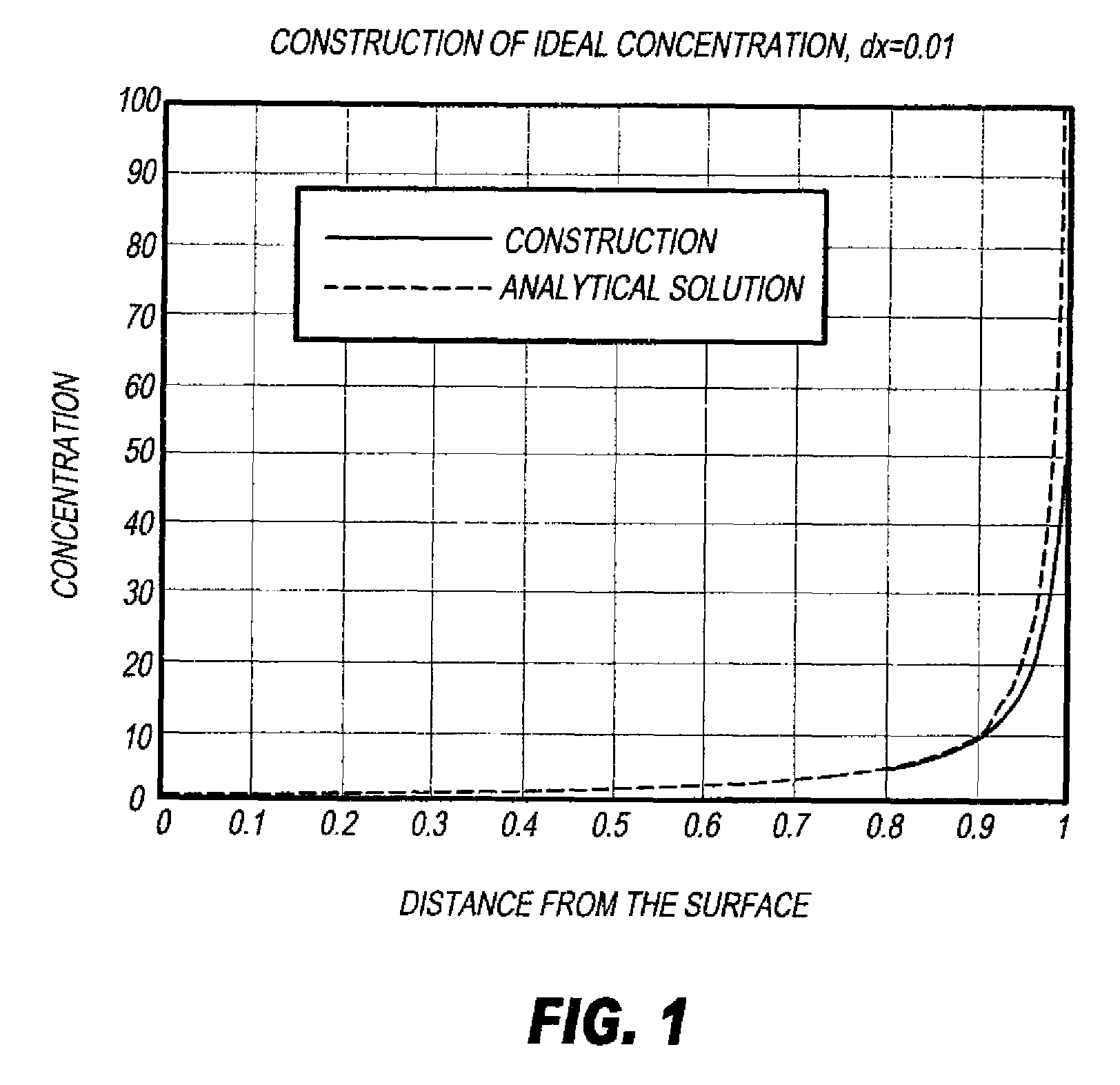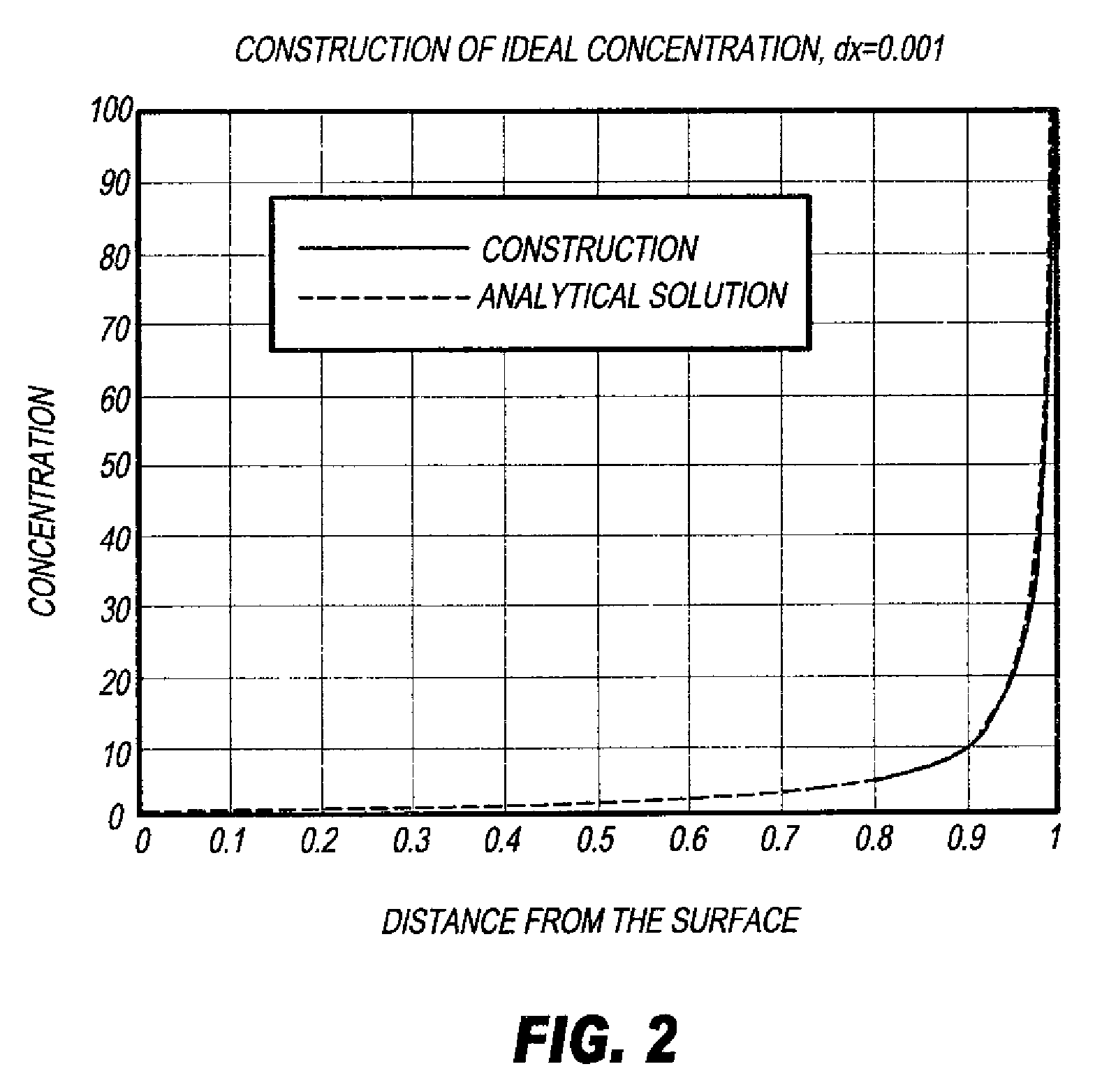Laser-ablatable elements and methods of use
a technology of laser and element, applied in the field of laser-ablatable elements, can solve the problems of limited plate production efficiency, slow and expensive use, and challenges the speed at which these flexographic printing plate precursors can be imaged, and achieve the effect of improving ablation efficiency and optimal ablation efficiency
- Summary
- Abstract
- Description
- Claims
- Application Information
AI Technical Summary
Benefits of technology
Problems solved by technology
Method used
Image
Examples
examples
[0157]The following components were used in preparing and carrying out the Examples:
[0158]PHMC represents polyhexamethylene carbonate diol, MW=2000 obtained from Sigma-Aldrich (St. Louis, Mo.).
[0159]Desmodur® N3300A is a hexamethylene diisocyanate based polyisocyanate obtained from Bayer Material Science (Pittsburgh, Pa.).
[0160]Mogul L is a carbon black obtained from Cabot Corporation (Billerica, Mass.).
[0161]Solsperse® 34750 is a 50 wt. % solution in ethyl acetate obtained from Lubrizol Limited (Manchester, UK).
Part A: Carbon Black Dispersion
[0162]Part A was prepared by mixing 494 g of PHMC with 60 grams of Mogul L and 46 g of Solsperse 34750, heating to 85° C. and milling using a Ross Mill equipped with a Cowles blade at 1200 rpm for 16 hours under vacuum to remove the ethyl acetate. The final concentration of the carbon black was 10.4 wt. % and the volume median particle size was 320 nm as determined using the Horiba particle size analyzer.
Melt A: Urethane Pre-Melt with 1 Wt. % C...
invention examples 1-3
[0166]Multi-sublayer laser-ablatable elements of this invention were prepared by casting a specified melt from TABLE I as the bottom layer into a 5″×5″ (12.7 cm×12.7 cm) Teflon mold, and covering it loosely to allow for evaporation of the acetone coating solvent. The sample was dried overnight at ambient temperature, followed by 24 hours at 70° C. Then, the next layer, again chosen from a melt in TABLE I, was cast over this bottom layer and the drying procedure repeated. Multilayer samples were built using this procedure. The final structures of the multilayer elements are shown in DIAGRAM I and TABLE II below. In DIAGRAM I and TABLE II, “CB” refers to carbon black at a particular dry weight %, and the thickness of each sub-layer is given in micrometers (μm).
invention example 4
[0172]A carbon black dispersion was prepared by mixing 75 g of Mogul L carbon black (Cabot) with 195 g of acetone and 30 g of Solsperse® 32000 (Avecia Pigments and Additives, Charlotte, N.C.) and the mixture was milled in an Eiger Mill at 4500 rpm for 2.5 hours. The resulting median particle size (volume average) was 0.129 μm, as measured using the Horiba particle size analyzer. A 2.4 g sample of this carbon black dispersion was added to 40 g of a 25 wt. % solution of cellulose nitrate (viscosity 5 / 6 sec, Hercules Powder Co., Wilmington, Del.) in acetone and stirred with a magnetic stirrer. The mixture was placed in a 3 inch (7.6 cm) square Teflon mold and covered with aluminum foil having 3 holes punched in it for slow solvent evaporation. The sample was dried for 24 hours in the mold at ambient temperature. The sides of the mold were removed and the sample element was dried for another 24 hours at ambient temperature to form the plate element.
[0173]A thin (5 μm) cross-section of t...
PUM
| Property | Measurement | Unit |
|---|---|---|
| thickness | aaaaa | aaaaa |
| thickness | aaaaa | aaaaa |
| depth | aaaaa | aaaaa |
Abstract
Description
Claims
Application Information
 Login to View More
Login to View More - R&D
- Intellectual Property
- Life Sciences
- Materials
- Tech Scout
- Unparalleled Data Quality
- Higher Quality Content
- 60% Fewer Hallucinations
Browse by: Latest US Patents, China's latest patents, Technical Efficacy Thesaurus, Application Domain, Technology Topic, Popular Technical Reports.
© 2025 PatSnap. All rights reserved.Legal|Privacy policy|Modern Slavery Act Transparency Statement|Sitemap|About US| Contact US: help@patsnap.com



